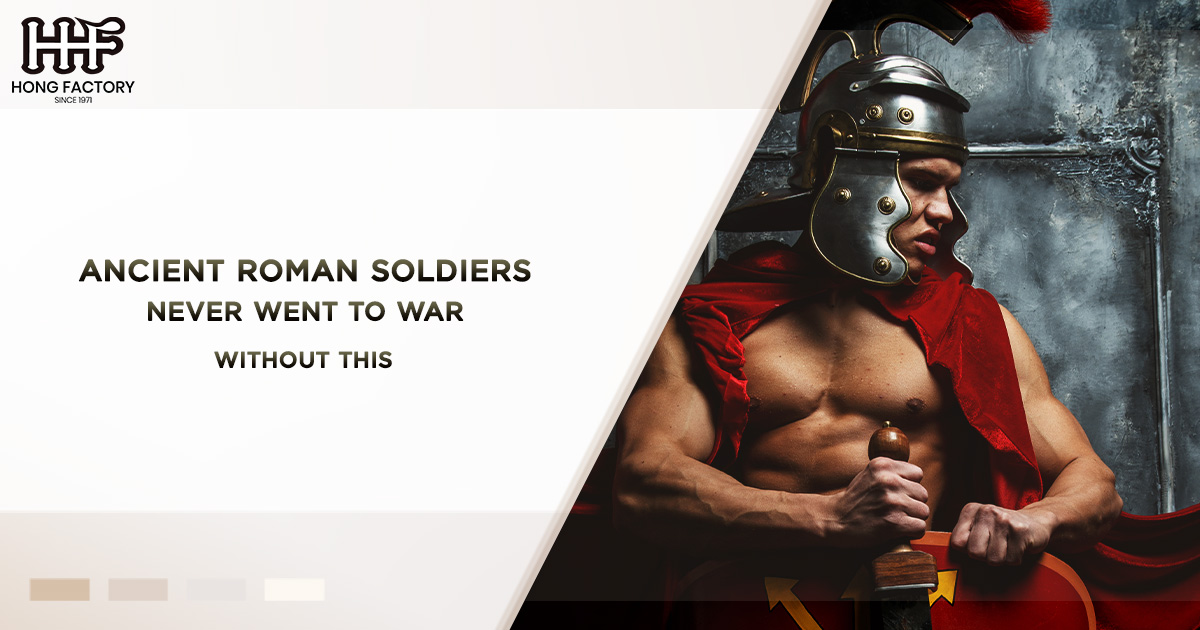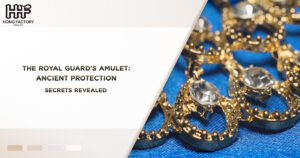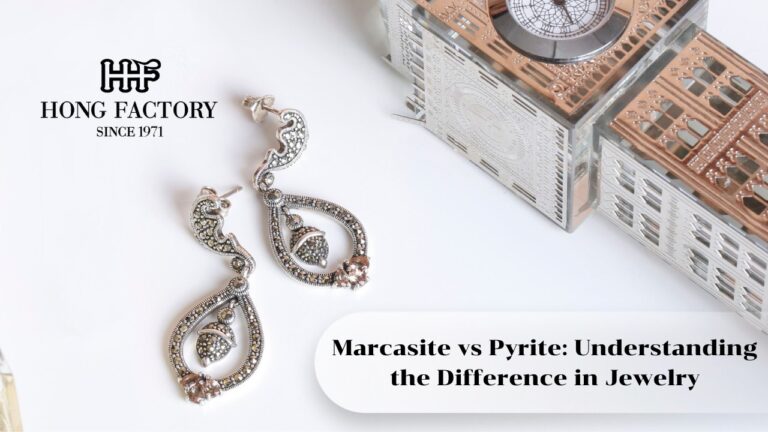
The image of a Roman soldier immediately conjures up visions of gleaming armor, sturdy shields, and razor-sharp weapons. However, beyond the physical protection they carried into battle, Roman soldiers also relied on something more intimate and spiritual: protective jewelry and amulets.
These small objects, often crafted with intricate designs and imbued with symbolic meaning, were essential components of a soldier’s gear, offering both psychological reassurance and what they believed to be supernatural protection. This article delves into the fascinating world of these ancient artifacts, exploring how Roman jewelry, military talismans, and ancient amulets served as crucial tools for warrior protection.
The Role of Jewelry in Ancient Roman Military Life
Roman society placed great importance on spirituality and divine favor, and this extended into their military practices. Beyond physical training and military strategy, Roman soldiers believed that success in battle required the protection and favor of higher powers. As a result, many soldiers carried or wore pieces of Roman jewelry specifically crafted as symbols of protection, fortune, and strength.
These items were far from ornamental. While they were often visually striking, they carried deep meaning and were thought to impart the wearer with special blessings. From pendants adorned with depictions of gods to intricately carved gemstones, these objects reflected a combination of personal belief, cultural traditions, and military superstition. For Roman soldiers, these protective items were more than just accessories—they were vital allies in the uncertainty and chaos of war.
Military Talismans : Guardians in Battle
The concept of a talisman—a physical object believed to hold protective powers—was deeply embedded in Roman culture. Roman soldiers, who faced constant threats of injury, death, and misfortune, often carried military talismans in the form of pendants, rings, bracelets, and even small figurines. These talismans usually depicted deities, animal symbols, or geometric patterns believed to ward off harm.
Deities as Protectors
Roman soldiers frequently used jewelry and amulets featuring depictions of gods and goddesses. Mars, the Roman god of war, was a popular choice among military men seeking his favor to ensure their victory and survival. Amulets bearing Mars’ image or symbolic representations, such as weapons or shields, were thought to provide divine strength and courage.
Other deities frequently invoked included Jupiter, the king of the gods, who was associated with power and authority, and Minerva, the goddess of wisdom and strategy, who was believed to guide soldiers in making wise decisions during battle. Soldiers often wore rings or pendants featuring these divine figures to feel a sense of connection to their gods, reinforcing their confidence, bravery, and resolve in the face of danger.
Animal Symbolism
Animal motifs were also common on Roman jewelry worn by soldiers. Certain animals were believed to embody qualities that were desirable in a warrior. For example
- Eagles, often linked to Jupiter, symbolized strength, dominance, and victory. Soldiers wore eagle-themed talismans to channel these traits.
- Wolves, associated with ferocity and loyalty, were another popular motif. The legendary tale of Romulus and Remus, the founders of Rome, being suckled by a wolf highlighted the animal as a protector and symbol of Rome’s strength.
- Lions, representing courage and invincibility, frequently appeared on rings and pendants.
These animal symbols served as constant reminders for soldiers to channel the traits they admired in these creatures during the challenges of combat.
Ancient Amulets : Mystical Powers for the Battlefield
Amulets were a more specific type of protective object that held particular spiritual significance. They were often crafted from materials believed to have inherent powers or features that amplified their effectiveness. Amulets carried by Roman soldiers came in many forms, each designed to address specific threats or provide certain advantages.
Fascinum : The Power of the Phallus
One of the most intriguing and widespread forms of ancient amulets used by Roman soldiers was the fascinum, a phallic-shaped pendant believed to ward off the “evil eye” and bring good fortune. While its appearance may seem unusual to modern sensibilities, the fascinum was a powerful protective charm in Roman culture. Soldiers carried these charms to safeguard against curses, envy, and negative energy from their enemies. The fascinum was often worn around the neck or hung from weapons to ensure protection during battles.
Magical Gemstones
Amulets made from gemstones were also popular among Roman soldiers. Certain stones, such as carnelian, jasper, and onyx, were believed to possess inherent magical properties. These gemstones were carved with images, symbols, or inscriptions to enhance their power. For example
- Carnelian was thought to bring courage and energy, making it ideal for warriors heading into combat.
- Jasper was associated with healing and protection, making it a common choice for rings, especially among soldiers who feared injury or disease.
- Onyx symbolized strength and resilience, qualities every Roman soldier aspired to embody.
Such amulets were often worn as rings or pendants, combining the allure of Roman jewelry with the mystical properties of the stones.
Personalized Inscriptions
Some amulets bore inscriptions of prayers, blessings, or magical formulas. Soldiers often commissioned these custom pieces to address their specific fears or aspirations. For instance, a soldier might wear an amulet inscribed with the phrase “Veni, Vidi, Vici” (“I came, I saw, I conquered”) as both a personal mantra and a protective charm.
The Psychological Power of Protection
In addition to their symbolic and spiritual value, Roman jewelry, military talismans, and ancient amulets provided psychological support to soldiers. These objects served as tangible reminders that they were not alone in battle. Whether it was the favor of the gods, the strength of animals, or the metaphysical power of gemstones, these items gave soldiers a sense of confidence and security.
One cannot underestimate the impact of this psychological reinforcement. Facing the possibility of death daily, Roman soldiers needed every source of motivation and reassurance they could find. Protective jewelry and amulets fulfilled this need, offering comfort and hope in the most dire of circumstances.
The Legacy of Roman Military Jewelry
The tradition of wearing protective jewelry and amulets did not fade with the fall of the Roman Empire. These practices left a lasting legacy, influencing the use of charms and talismans in later cultures and military traditions. Today, archaeologists continue to uncover examples of Roman jewelry and amulets in military contexts, shedding light on the personal beliefs and experiences of ancient soldiers.
Each discovery reveals not only the craftsmanship of Roman artisans but also the hopes, fears, and spiritual lives of the soldiers who once wore these items. These small, personal objects are windows into a world where divine protection and physical courage went hand in hand.
Conclusion
For ancient Roman soldiers, going to war meant equipping themselves not only with swords and shields but also with faith and symbolism. Roman jewelry, military talismans, and ancient amulets were indispensable tools of warrior protection, blending artistry, spirituality, and practicality. Whether through the depiction of gods, the symbolism of animals, or the mystical power of gemstones, these objects provided soldiers with more than just physical protection—they offered courage, hope, and a connection to something greater.
As we examine these artifacts today, we are reminded of how deeply intertwined spirituality and survival were in the lives of ancient Roman soldiers. These items, carried into battles thousands of years ago, still speak to the enduring human desire for protection, strength, and meaning in the face of adversity.















